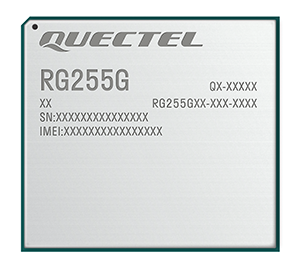
As 2G and 3G networks rapidly sunset across the globe, the Internet of Things (IoT) market faces a critical challenge: how to maintain reliable cellular connectivity without the complexity or cost of full 5G. The answer may lie in 5G Reduced Capability (RedCap).

Bridging the connectivity gap
Traditional 4G solutions have served the IoT space well. However, they often come with trade-offs in terms of bandwidth, latency, or scalability. Full 5G, while powerful, is overkill for many IoT applications and remains costly and under-deployed in numerous regions.
Enter 5G RedCap, a lighter, more affordable variant of 5G that maintains essential features like reduced latency and higher data throughput while omitting resource-intensive capabilities. RedCap typically supports download speeds over 220 Mbps and upload speeds above 120 Mbps – comparable to LTE Cat 1 but with added benefits such as compatibility with the 5G core, network slicing, and enhanced positioning.
RedCap is engineered to strike a practical balance between power efficiency, performance, and affordability. RedCap devices could be up to 80% cheaper and consume 90% less power than standard 5G modules. These improvements are enabled by streamlined hardware configurations and the ability to use half-duplex FDD, reducing component costs.
RedCap is expected to fill a critical mid-tier role offering better data rates and responsiveness than NB-IoT or LTE-M, but without the expense or complexity of full 5G. It unlocks new use cases while keeping connectivity accessible for both emerging markets and applications where full-scale 5G is unnecessary.
Real-world use cases
RedCap adoption is accelerating across various sectors. Wearables for health monitoring, industrial wireless sensors, asset tracking systems, and point-of-sale (POS) devices are among the early applications. Its capabilities make it suitable for customer premises equipment (CPE), telematics, routers, and automotive applications – use cases traditionally dominated by LTE Cat 4.
RedCap’s strength lies in its balance of throughput, power efficiency, and affordability. While it may not match LTE Cat 4 on cost today, its trajectory is clear: as adoption grows and manufacturing scales up, RedCap is expected to reach near-parity with LTE pricing.
Quectel RG255G
Quectel’s RG255G is a series of 5G Redcap Sub-6 GHz LGA modules. Adopting 3GPP Rel-17 RedCap technology, with features of URLLC/slicing, up to 256QAM DL/UL and LTE & NR-FR1 (20 MHz), the module supports a theoretical peak data rate of 220 Mbps in the downlink and 121 Mbps in the uplink. The module supports LTE Cat 4 and 5G Sub-6 SA mode and is backward-compatible with Rel-15 and Rel-16 networks.
The RG255G series is an industrial-grade module, which can be widely used in smart grid, video network, internet of vehicles, POS machines, industrial automation, and medium and low-speed FWA. The module integrates a multi-constellation GNSS (GPS, GLONASS, BDS, and Galileo) receiver helping to simplify product design and achieve high-precision positioning. A rich set of Internet protocols, industry-standard interfaces, and abundant functionalities extend the applicability of the module to a wide range of applications.
| Tel: | +27 11 781 2029 |
| Email: | [email protected] |
| www: | www.icorptechnologies.co.za |
| Articles: | More information and articles about iCorp Technologies |

© Technews Publishing (Pty) Ltd | All Rights Reserved